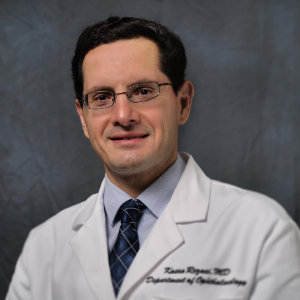Title : Ultra-widefield protocol enhances automated classification of diabetic retinopathy severity with OCT angiography
Abstract:
Purpose: To assess the diagnostic usefulness of retinal nonperfusion to classify eyes based on diabetic retinopathy (DR) severity on OCT angiography (OCTA) and determine whether wider field of view (FOV) OCTA protocols enhance the diagnostic usefulness of retinal nonperfusion in the classification of DR severity.
Design: Retrospective cross-sectional study.
Participants: Diabetic patients undergoing ultra-widefield (UWF) OCTA imaging at 1 academic retina practice.
Methods: Ultra-widefield OCTA images with 100° FOV were obtained from 60 eyes. Eyes were grouped as those with diabetes without retinopathy (DWR), those with nonproliferative diabetic retinopathy (NPDR), or those with proliferative diabetic retinopathy (PDR). The ratio of nonperfusion (RNP) was expressed as the percent area of capillary nonperfusion within the FOV. The RNP was obtained in the FOV 100° image and concentric sectors encompassing 10°, 10° to 30°, 30° to 50°, and 50° to 100°.
Main outcome measures: Mean RNP among DR groups, mean RNP measured among FOV sectors, and area under the curve (AUC) of the receiver operating characteristics when using RNP as a cutoff value to distinguish between DR groups.
Results: Mean RNP from the FOV 50° to 100° sector was different among all groups: DWR, 14.6±5.1%; NPDR, 27.5±7.5%; and PDR, 41.5±19.1% (P < 0.01). Within each DR group, field of view from 50° to 100° measured higher RNP than all other sectors (P < 0.01). Field of view from 50° to 100° showed the highest optimal sensitivity and specificity to distinguish NPDR from DWR with an RNP cutoff value of 21.2% (89.5% and 88.2%; AUC, 0.944) and PDR from NPDR with an RNP cutoff value of 31.6% (79.2% and 78.9%; AUC, 0.752).
Conclusions: Ratio of nonperfusion on average is higher in more severe DR. The most peripheral sector of the widefield OCTA (FOV 50°-100°) showed on average higher RNP and showed more diagnostic usefulness in determining DR severity compared with more central sectors and the FOV 100 image as a whole.




